Physical Description
The Lypertek Tevi are a fairly plain looking pair of true wireless headphones - definitely reminiscent of the Sennheiser TWS headphones but at a fraction of their price. I managed to pick these up at a discount price from Amazon. The Tevi's feature a single push button on each earphone (which I personally found quite hard to find and press when I had them in my ears) but the good news is that all your necessary functions can be accessed from these buttons - including volume up and down. This is always a nice feature on TWS headphones.

The charger case looks very similar to the one supplied with the Sennheiser headphones as it's covered in a rather attractive material. The case also features USB type C which again is always a nice feature. Charging is nice and fast and the case offers a crazy number of hours to the headphones.
Whilst the headphones are made of high impact plastic, they don't feel at all cheap and their fit is excellent for me. The Tevi's come with the usual shirt recharge cable, an assortment of different tips including some Comply type foams and an instruction sheet.
Bluetooth range isn't overly impressive but I didn't experience any problems when keeping my phone in my pocket. It just about passed the upstairs toilet test (just a couple of dropouts when I washed my hands) - both the Mavin's and the original Airpods perform better as far as bluetooth range is concerned but generally there's not a problem.
Sound Quality
When it comes to headphones, sound quality is king as far as I'm concerned. If doesn't make any difference to me if they feature the finest noise cancelling, fantastic smart features or battery life that's out of this world if the sound quality is lacking. Luckily, the Tevi's definitely deliver when it comes to sound quality.

I contacted Lypertek about trying out their beta software and firmware update for the Tev's and they kindly sent me a link. The headphones have to be updated before the software recognises the headphones and the firmware update does definitely effect the sound characteristics - bass is slightly boosted and the slightly 'shouty' upper mids are slightly reduced. The headphones still retain their wonderful sense of detail thankfully
 .
.
One of the other pairs of TWS headphones which I use regularly and rate very highly are the Mavin Air X which I have previously described as wireless Etymotics. Well I'm afraid that description wasn't truly accurate as the Tevi's really have them beat when it comes to reproducing the sound quality that you can get from the Etymotics. They definitely share the same sound characteristics - having a really nice detailed and punchy sound - they are very dynamic sounding and yet also balanced. In fact it's this balanced sound quality which really sets them apart from many of their peers as many bluetooth headphones tend to have too much boost in the bass frequencies and can get rather muddy sounding.
They also have some impressive volume to them as well. There's no way I could listen to them at full volume - that's not something I could say about many of the other TWS headphones out there.
I must admit that our off the box when I first got them I found the sound to be somewhat bright and lacking slightly in bass however after having them for a couple of weeks I contacted Lypertek about a software update and new Android application which has subtly improved the bass and is most welcome. Unfortunately the Lypertek application is currently still in beta and not yet generally available. However there's no doubt in my mind that this is definitely worth doing once it does become available. With the update in place the sound quality has changed character - especially in the bass. Even with the eq settings set to flat this character has been changed to offer a fuller bass and slightly lower the upper mids/lower treble to help reduce long term listening fatigue. I have noticed a slight veil that covers some of the details but in my opinion it's still worth doing.
The thing that really makes these headphones stand out though is their impressive resolution. In genuinely hearing things in some of my familiar tracks that I've not noticed before - definitely not bad for a pair of fairly inexpensive set of bluetooth headphones. Both mids and highs are truly superb - these are the 'flattest' bluetooth headphones I've come across so far. They use either APtX or AAC (depending on your phone I suppose) and connect without any problems. There's virtually no noise floor with these headphones - sometimes you have to press the button just to make sure they're still powered on.
Unfortunately the Tevi's do have a couple of 'issues' which prevent me from describing them as perfect. The Bluetooth range leaves a lot to be desired when it comes to comparing them to their competition. They pretty much fail the upstairs toilet test - dropping connection to the phone before I've even reached the top of the stairs. Other Bluetooth 5.0 headphones in my collection can do this with ease. In all fairness though I don't experience dropouts when using them normally (ie with the phone nearby or in my pocket). The other problem that I have with them may well be a software issue which may get resolved when the software update comes out of beta. More than once the headphones have temporarily lost connection on the right hand earbud. A quick press of the button restores the connection but it's not ideal.
Conclusion
My recent experience with active noise cancelling from the likes of Sony and Apple have made me realise a couple of things. Firstly no matter which way you try to rationalise it, additional features such as active noise cancelling and sophisticated touch controls all cost money to produce and that has to come from money that could be spent on improving sound quality. Secondly active noise cancelling really isn't very useful in these types of in-ear headphone as they already provide sufficient passive noise isolation (unless you're one of those people who listen to music at very low volumes). I would much rather have a headphone product that's designed around providing the very best sound quality without compromise. The Lypertek Tevi is definitely designed around sound quality. All of its features that make it stand out from its competitors are genuinely useful - great battery life, great sound quality, excellent volume range, easy and comfortable fit and firmware upgradable makes these the ideal TWS headphones for anyone who is looking for the best possible sound quality for the price - who doesn't mind being close to their phone when in use.
I personally feel that these are the best TWS earphones I have tried so far (and yes that includes the Apple Airpods Pro and the Sony WF1000XM3's). I was impressed with both those noise cancelling and expensive headphones but ultimately I felt that the Airpod Pro's were simply too expensive and their overall design ethos was based around features rather than sound quality. Whilst they sounded pretty impressive - especially when taking into account their active noise cancelling, ultimately I'm always going to be more interested in sound quality.
The Sony's on the other hand really did impress me with regard to their sound quality. They exhibited a really nice fulsome sound and shared pretty much the same sound characteristic as their larger counterparts. Unfortunately I felt that they simply didn't go loud enough and that, for me is a deal breaker as it's something that typically can't be sorted out with a software fix.
What the Tevi's offered for me was a nice combination of sound quality without any significant compromises, excellent battery life and comfortable fit. The other thing they offer (from my point of view) is that they're inexpensive which means I'm not suffering the guilt that I almost certainly would suffer if I'd bought the Airpod Pros.
Postscript
Tonight I tried a quick comparison with my beloved Ultimate Ears Triple Fi 10's and I have to be perfectly honest here - I preferred the sound character of the Tevi's. Don't get me wrong, the Triple Fi's were capable of reproducing a greater resolution and perhaps even are more faithful to the original recording but the Tevi's offered slightly more boost to the bass and generally sounded fuller.
I was slightly concerned about the apparent loss of presence in the upper mids since the firmware update but to be honest, I still really like the sound characteristics that the Tevi's offer. I must admit I was somewhat surprised at just how close these are to my Ultimate Ears - I've always considered these to be the very best headphones in my collection. Perhaps they still are but the gap in both performance and excellent pricing is definitely closing.
I also feel that it's only fair to point out that I'm 56 years old. Whilst I still think my hearing is generally OK, I have to be honest and admit to my age. Obviously I can't hear what an 18 year old will hear. For me, tone and overall frequency balance (to my ears) is easily as important as information retrieval. I am sensitive to 'bright' sounding headphones but also appreciate treble detail. For example, I love the sound characteristics of my Sony WH1000XM2's. Whilst the treble detail may be slightly laid back in the mix and the bass may be slightly overblown when compared to more accurate headphones, I nonetheless find them very musical. I just wish they were a little more comfortable.
The Lypertek Tevi are a fairly plain looking pair of true wireless headphones - definitely reminiscent of the Sennheiser TWS headphones but at a fraction of their price. I managed to pick these up at a discount price from Amazon. The Tevi's feature a single push button on each earphone (which I personally found quite hard to find and press when I had them in my ears) but the good news is that all your necessary functions can be accessed from these buttons - including volume up and down. This is always a nice feature on TWS headphones.

The charger case looks very similar to the one supplied with the Sennheiser headphones as it's covered in a rather attractive material. The case also features USB type C which again is always a nice feature. Charging is nice and fast and the case offers a crazy number of hours to the headphones.
Whilst the headphones are made of high impact plastic, they don't feel at all cheap and their fit is excellent for me. The Tevi's come with the usual shirt recharge cable, an assortment of different tips including some Comply type foams and an instruction sheet.
Bluetooth range isn't overly impressive but I didn't experience any problems when keeping my phone in my pocket. It just about passed the upstairs toilet test (just a couple of dropouts when I washed my hands) - both the Mavin's and the original Airpods perform better as far as bluetooth range is concerned but generally there's not a problem.
Sound Quality
When it comes to headphones, sound quality is king as far as I'm concerned. If doesn't make any difference to me if they feature the finest noise cancelling, fantastic smart features or battery life that's out of this world if the sound quality is lacking. Luckily, the Tevi's definitely deliver when it comes to sound quality.

I contacted Lypertek about trying out their beta software and firmware update for the Tev's and they kindly sent me a link. The headphones have to be updated before the software recognises the headphones and the firmware update does definitely effect the sound characteristics - bass is slightly boosted and the slightly 'shouty' upper mids are slightly reduced. The headphones still retain their wonderful sense of detail thankfully
 .
. One of the other pairs of TWS headphones which I use regularly and rate very highly are the Mavin Air X which I have previously described as wireless Etymotics. Well I'm afraid that description wasn't truly accurate as the Tevi's really have them beat when it comes to reproducing the sound quality that you can get from the Etymotics. They definitely share the same sound characteristics - having a really nice detailed and punchy sound - they are very dynamic sounding and yet also balanced. In fact it's this balanced sound quality which really sets them apart from many of their peers as many bluetooth headphones tend to have too much boost in the bass frequencies and can get rather muddy sounding.
They also have some impressive volume to them as well. There's no way I could listen to them at full volume - that's not something I could say about many of the other TWS headphones out there.
I must admit that our off the box when I first got them I found the sound to be somewhat bright and lacking slightly in bass however after having them for a couple of weeks I contacted Lypertek about a software update and new Android application which has subtly improved the bass and is most welcome. Unfortunately the Lypertek application is currently still in beta and not yet generally available. However there's no doubt in my mind that this is definitely worth doing once it does become available. With the update in place the sound quality has changed character - especially in the bass. Even with the eq settings set to flat this character has been changed to offer a fuller bass and slightly lower the upper mids/lower treble to help reduce long term listening fatigue. I have noticed a slight veil that covers some of the details but in my opinion it's still worth doing.
The thing that really makes these headphones stand out though is their impressive resolution. In genuinely hearing things in some of my familiar tracks that I've not noticed before - definitely not bad for a pair of fairly inexpensive set of bluetooth headphones. Both mids and highs are truly superb - these are the 'flattest' bluetooth headphones I've come across so far. They use either APtX or AAC (depending on your phone I suppose) and connect without any problems. There's virtually no noise floor with these headphones - sometimes you have to press the button just to make sure they're still powered on.
Unfortunately the Tevi's do have a couple of 'issues' which prevent me from describing them as perfect. The Bluetooth range leaves a lot to be desired when it comes to comparing them to their competition. They pretty much fail the upstairs toilet test - dropping connection to the phone before I've even reached the top of the stairs. Other Bluetooth 5.0 headphones in my collection can do this with ease. In all fairness though I don't experience dropouts when using them normally (ie with the phone nearby or in my pocket). The other problem that I have with them may well be a software issue which may get resolved when the software update comes out of beta. More than once the headphones have temporarily lost connection on the right hand earbud. A quick press of the button restores the connection but it's not ideal.
Conclusion
My recent experience with active noise cancelling from the likes of Sony and Apple have made me realise a couple of things. Firstly no matter which way you try to rationalise it, additional features such as active noise cancelling and sophisticated touch controls all cost money to produce and that has to come from money that could be spent on improving sound quality. Secondly active noise cancelling really isn't very useful in these types of in-ear headphone as they already provide sufficient passive noise isolation (unless you're one of those people who listen to music at very low volumes). I would much rather have a headphone product that's designed around providing the very best sound quality without compromise. The Lypertek Tevi is definitely designed around sound quality. All of its features that make it stand out from its competitors are genuinely useful - great battery life, great sound quality, excellent volume range, easy and comfortable fit and firmware upgradable makes these the ideal TWS headphones for anyone who is looking for the best possible sound quality for the price - who doesn't mind being close to their phone when in use.
I personally feel that these are the best TWS earphones I have tried so far (and yes that includes the Apple Airpods Pro and the Sony WF1000XM3's). I was impressed with both those noise cancelling and expensive headphones but ultimately I felt that the Airpod Pro's were simply too expensive and their overall design ethos was based around features rather than sound quality. Whilst they sounded pretty impressive - especially when taking into account their active noise cancelling, ultimately I'm always going to be more interested in sound quality.
The Sony's on the other hand really did impress me with regard to their sound quality. They exhibited a really nice fulsome sound and shared pretty much the same sound characteristic as their larger counterparts. Unfortunately I felt that they simply didn't go loud enough and that, for me is a deal breaker as it's something that typically can't be sorted out with a software fix.
What the Tevi's offered for me was a nice combination of sound quality without any significant compromises, excellent battery life and comfortable fit. The other thing they offer (from my point of view) is that they're inexpensive which means I'm not suffering the guilt that I almost certainly would suffer if I'd bought the Airpod Pros.
Postscript
Tonight I tried a quick comparison with my beloved Ultimate Ears Triple Fi 10's and I have to be perfectly honest here - I preferred the sound character of the Tevi's. Don't get me wrong, the Triple Fi's were capable of reproducing a greater resolution and perhaps even are more faithful to the original recording but the Tevi's offered slightly more boost to the bass and generally sounded fuller.
I was slightly concerned about the apparent loss of presence in the upper mids since the firmware update but to be honest, I still really like the sound characteristics that the Tevi's offer. I must admit I was somewhat surprised at just how close these are to my Ultimate Ears - I've always considered these to be the very best headphones in my collection. Perhaps they still are but the gap in both performance and excellent pricing is definitely closing.
I also feel that it's only fair to point out that I'm 56 years old. Whilst I still think my hearing is generally OK, I have to be honest and admit to my age. Obviously I can't hear what an 18 year old will hear. For me, tone and overall frequency balance (to my ears) is easily as important as information retrieval. I am sensitive to 'bright' sounding headphones but also appreciate treble detail. For example, I love the sound characteristics of my Sony WH1000XM2's. Whilst the treble detail may be slightly laid back in the mix and the bass may be slightly overblown when compared to more accurate headphones, I nonetheless find them very musical. I just wish they were a little more comfortable.




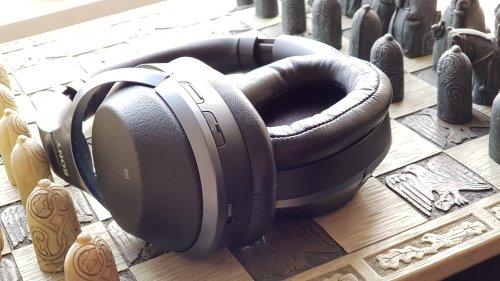



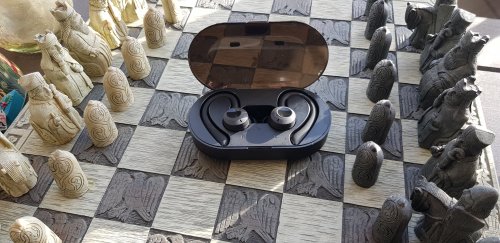





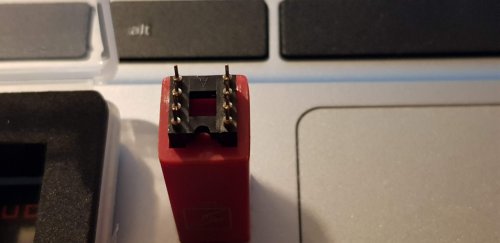



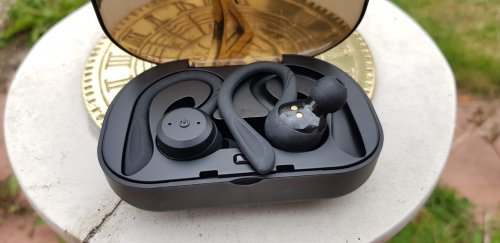















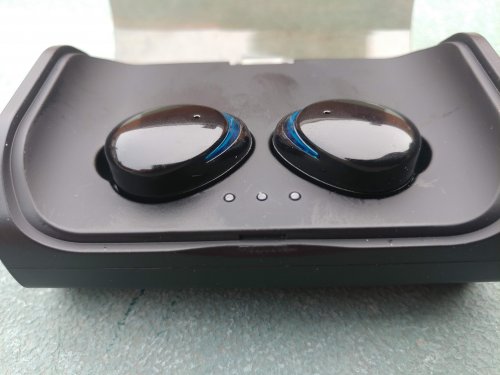










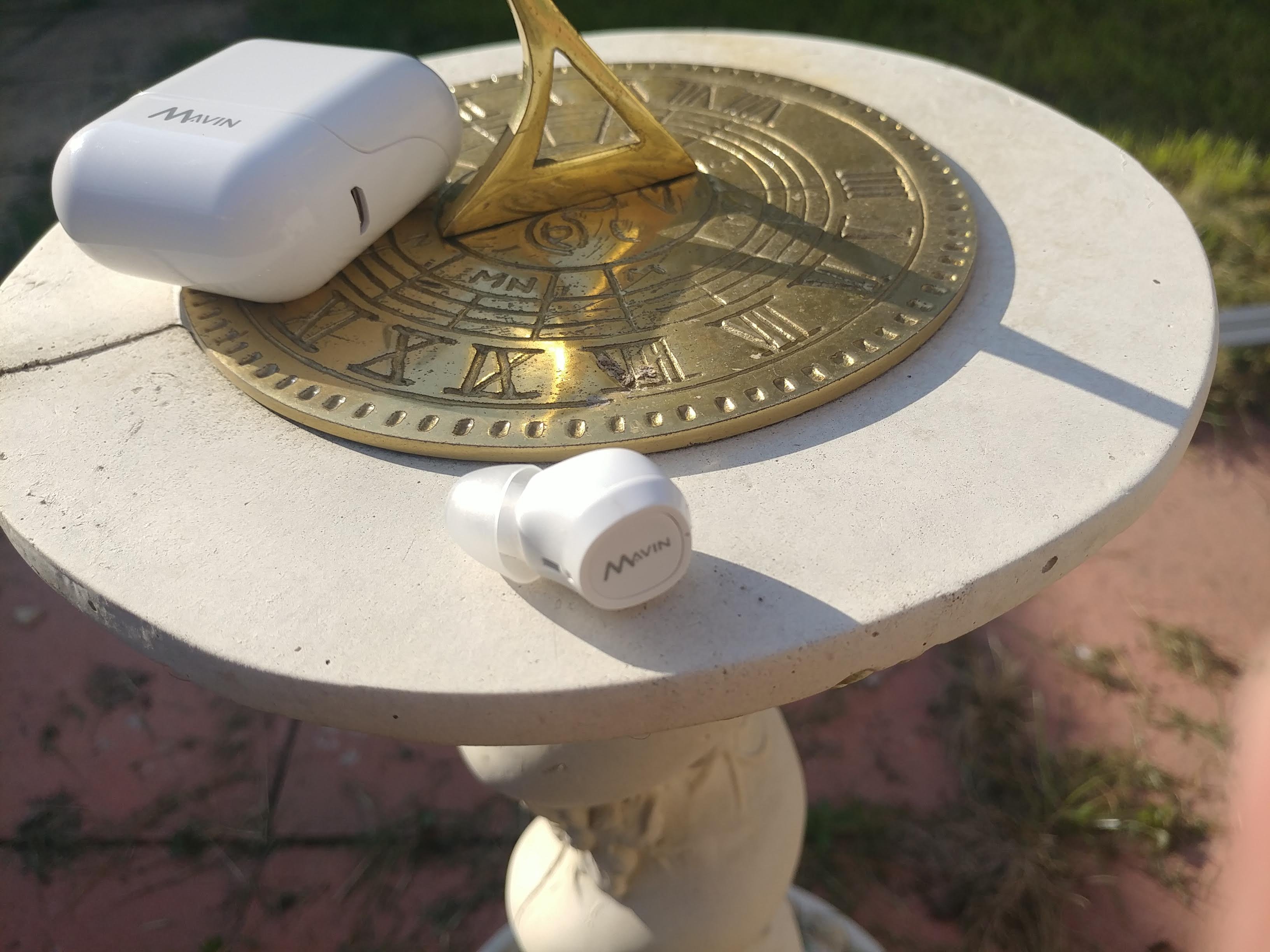
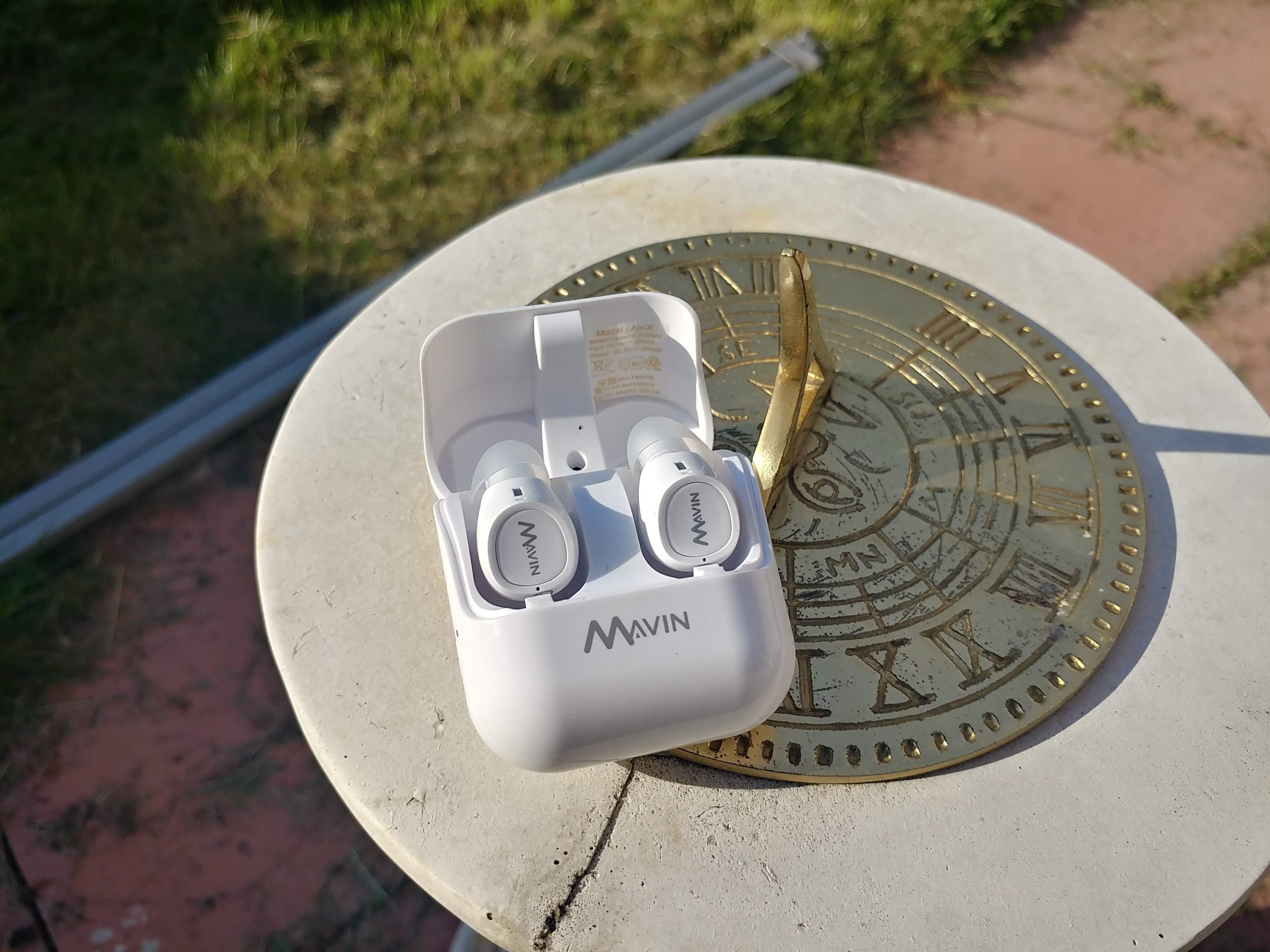






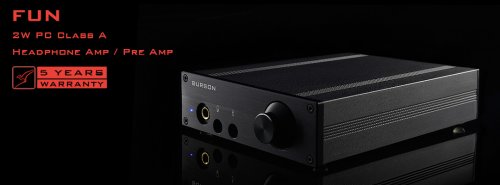



























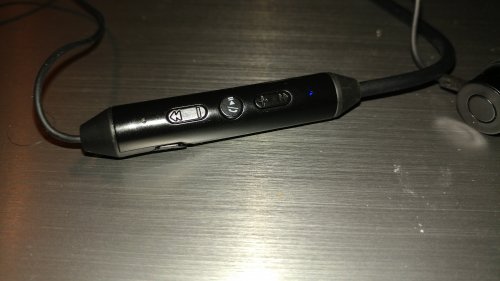








But in the image of the back box you posted it says it have APTX.